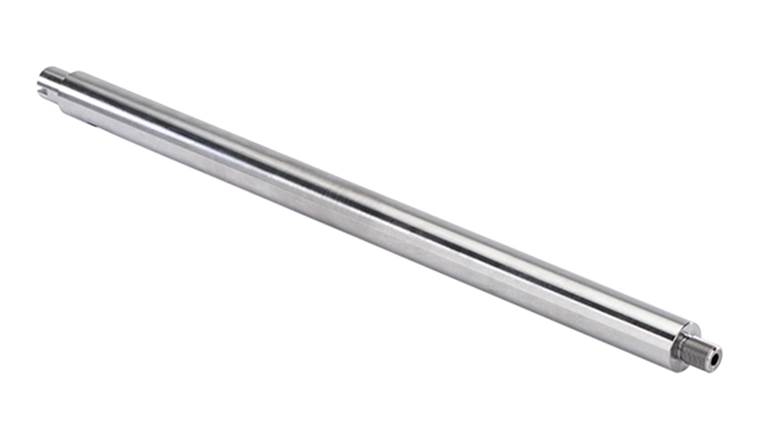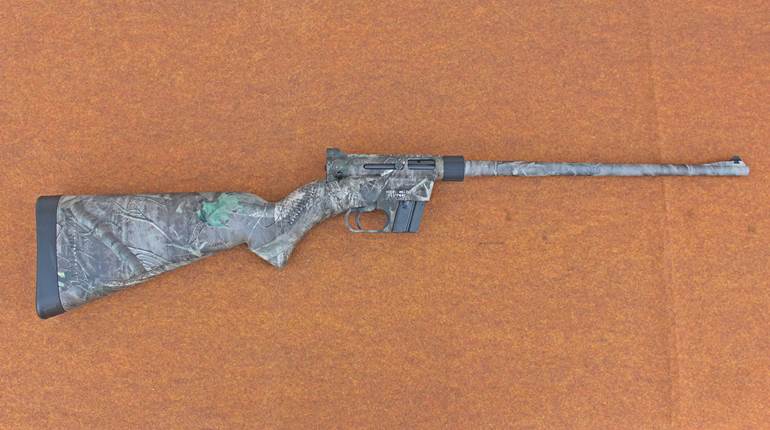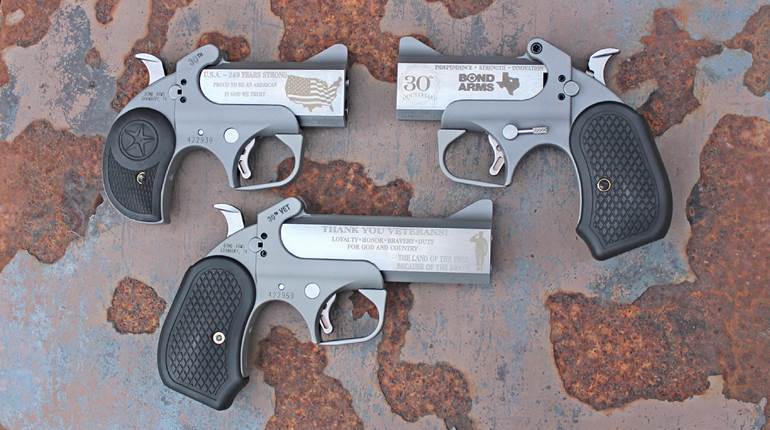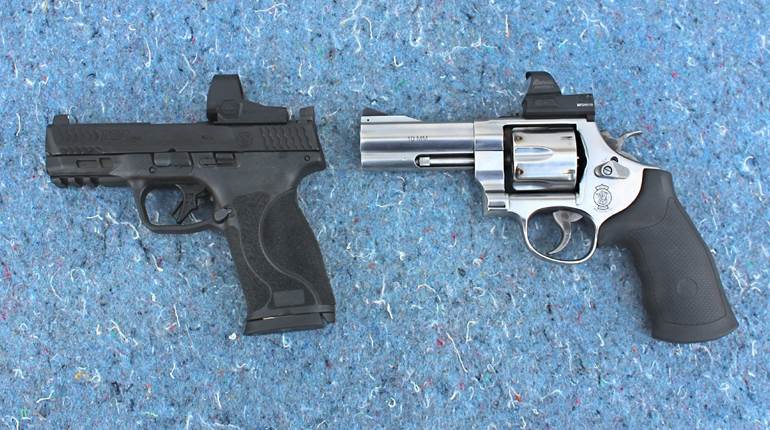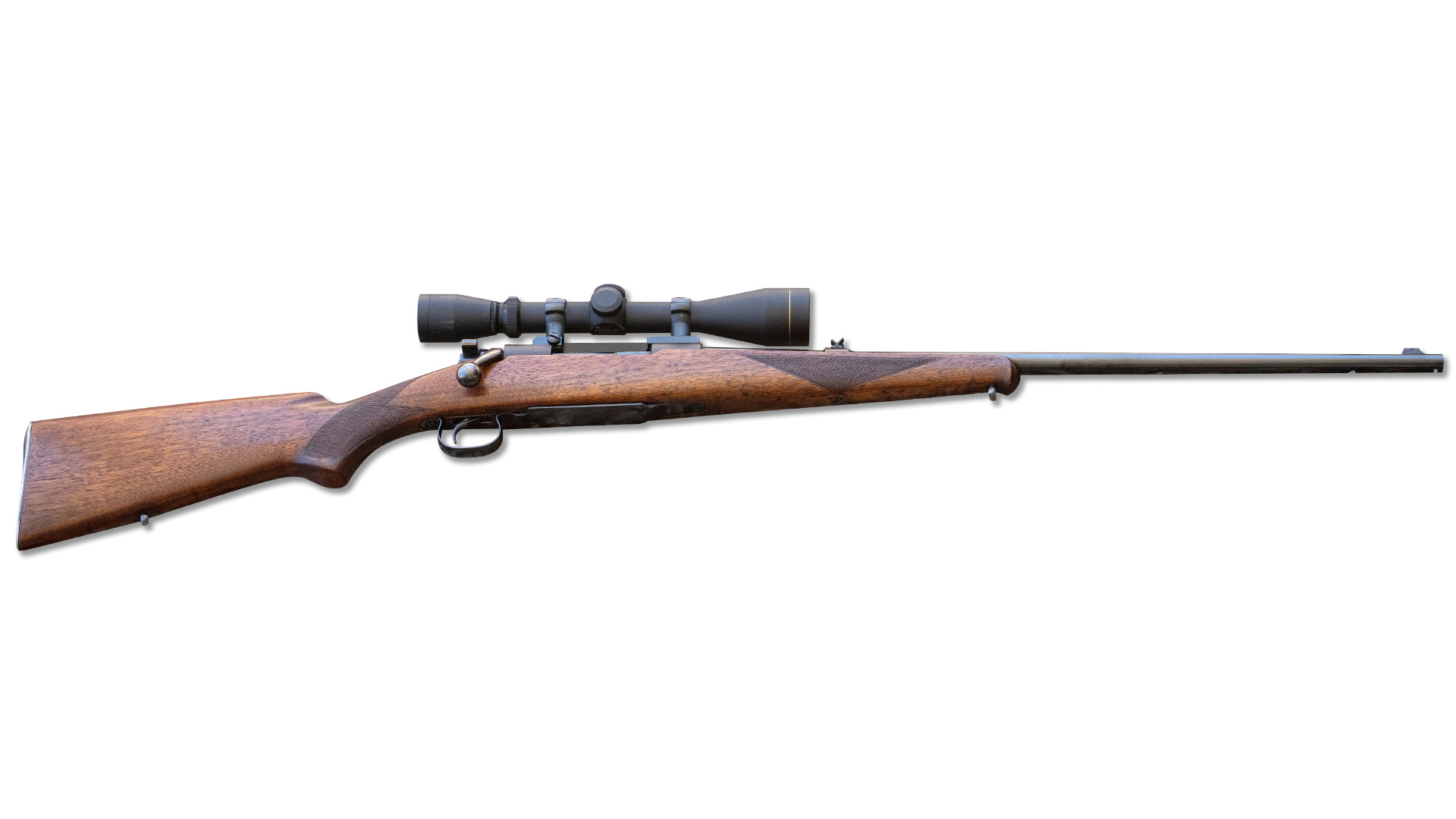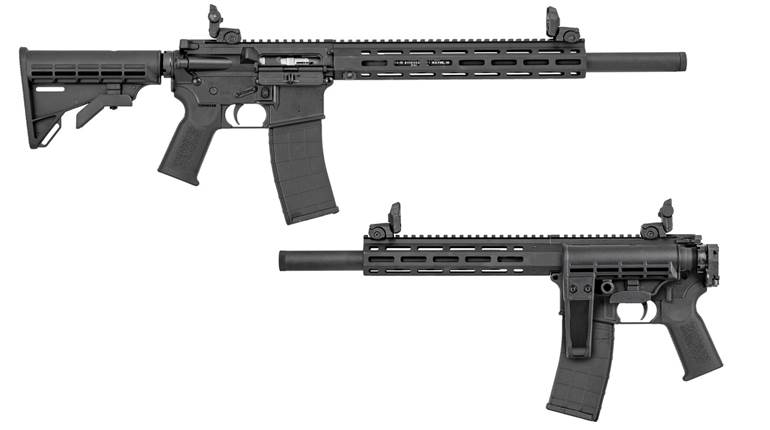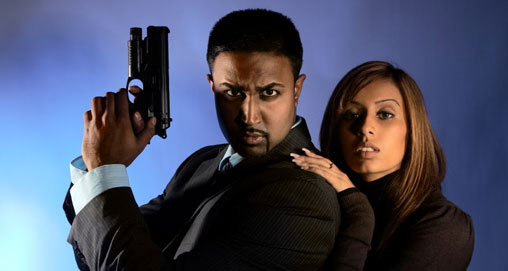
7/16/2012
The film industry is big business for one simple reason: People love movies. While movie critics are busily measuring each film they see for an Academy Award, most of us are perfectly happy to enjoy the big, multi-million dollar action films that splash across the screen. But most of us know, or should know, that gun and shooting related footage in films is served with a healthy dose of creative license. Here's some of the silver screen shooting silliness that gun owners should take with a grain of salt—liberally sprinkled over a tub of popcorn.
Everlasting Ammo
Associate Online Editor Paul Rackley recently summed up real-world self-defense situations nicely when he wrote, "According to statistics, most self-defense situations follow the “Rule of Threes,” meaning the fight will happen at 3 yards with three shots fired and last about three seconds." But let's be honest, when it comes to coughing up the cash for a movie ticket and jumbo popcorn, who is going to be satisfied with three-seconds of gun play? And so, one way or another, action movies increase the number of rounds fired by any means possible. It used to be that guns in movies never ran out of ammo. With the advent of high-capacity magazines, guns now run out of ammo but characters almost never run out of reloads.
Here's an interesting exercise to try the next time you take your defensive pistol to the range. Load the pistol with the same number of rounds you would for concealed carry, along with the same number of reloads you usually keep on hand. When you're ready, shoot and reload the gun as fast as you can. Two realities will become clear right away. First, shooting at movie-style trigger speeds destroys accuracy. Second, becoming ammunition-free can happen in a matter of seconds. For practical self-defense applications, follow this sage advice: “Don't shoot fast, shoot good!”
Stretching the Action
Movie directors want to produce films that elicit an emotional response from the audience. In order to increase the sense of tension, they often slow down the action in various ways. One of the most popular conventions is the slow-motion sequence. We can actually see the bullet leave the barrel of the gun as it travels to the target. Other action-stretching tools include narcissistic monologues, running gun fights and bad guys who take their time doing what they do best. It's important to note here that characters never get hit by a bullet until it’s beneficial to the plot of the film.
Movies do us the disfavor of giving the illusion that there may be more time to deal with a threat than is actually available. The Tueller Drill demonstrates that an attacker with an edged or blunt item can cross a distance of 7 yards to deliver a lethal blow in as little as 1.5 seconds. This is less time than it takes a trained officer to draw a gun from a hip holster. An important part of preparing a self-defense plan is having an understanding of how long it will take you to bring your defensive tools into action.
Cue the Scary Music
Movie makers are story tellers. And just like any other kind of story telling process, they use a stylized set of cues to let the audience know what is about to happen. One of the most famous examples of this is the two-note music warning of imminent attack in the movie “Jaws.” Along with music, directors use lighting, costuming and certain kinds of body language to hang a flashing neon sign over the head of a character to say: “This is the Bad Guy!”
Off of the big screen, assailants are not always clearly labeled. Proper use of situational awareness can make a big difference in staying safe. Keep away from the people, places and situations you know could be dangerous. When going about your daily routine, pay attention to the environment and watch for potential threats. For an excellent explanation of situational awareness, it's hard to beat Jeff Cooper's description of the combat mindset using his famous Color Code system.
One-Shot Stop
Black Hat Bart draws his six-gun but the Sheriff shoots first! As the bullet strikes, Bart's body freezes with his face in a rictus scowl. Bart's revolver slips from his fingers as he clutches at his chest. With one last hate-filled gurgle, the evil land baron drops to the ground, never to swindle another widow out of her silver mine again.
Before the Motion Picture Association of America (MPAA) instituted a rating system, American movie makers followed a strict set of production standards in order to keep their films more or less family friendly. As a result, the cowboy style swift-and-bloodless gunfights became a movie-making convention. It was this need for squeaky-clean conflict resolution that inspired the use of Phasers in the original Star Trek television series. A flash of light and the bad guy just disappeared. What could be better?
Unfortunately, the movie model of the one-shot-stop is so firmly engrained in people's minds that it's often sought after as a real-world solution. Most defensive gun and caliber arguments are driven by the contention that a particular option is more likely to stop an attacker with a single blow than some other choice. Thinking in terms of one-shot-stops overlooks a critical tactical factor: All gun and ammunition combination can fail to stop with just one shot under certain circumstances. Shooters should be mentally and physically prepared to fire multiple shots accurately in order to successfully defend themselves.
Wonder Guns
Who needs Harry Potter's wizard wand or a Jedi Lightsaber when Hollywood magic can turn any ordinary firearm into a Wonder Gun? With a little help from our friends in the FX department, a shot fired from a rifle will send an assailant flying through the air like a punted football, and a single round of buckshot will clear an entire room full of villains.
Are you the good cop facing off against an entrenched enemy sniper firing at you with a scoped rifle from 250-yards away? Just draw your Hollywood-enhanced Wonder Snubby .38 Spl. revolver. While running across an open space in a serpentine fashion, your single revolver shot will stop the sniper and win the day. Possibly the very coolest Wonder Gun technique is demonstrated in the movie “Wanted." Angelina Jolie's character is able to curve bullets so they swerve around corners mid flight. This particular stunt breaks so many of the laws of physics it's simply astounding the movie didn't win an Academy Award.
Fighting on Empty
With his pump-action shotgun leveled at his former accomplice, the hardened criminal growls, "Where's the gold, Luke?" Holding his hands up shaking his head side to side, the ex-bank robber cries, "I don't know what you're talking about Hank!" With hatred shining in his steely eyes, Hank briskly racks the slide on his shotgun and asks again, "Where's the gold, Luke?!"
That’s right folks, Hank was handling a functionally unloaded gun for the first few minutes of the conversation. Hollywood directors love the psychological effects produced by firearm actions being cycled. Thus shotguns are pumped, hammers are cocked and slides are racked frequently on screen for the audience to see. In fact, this racking action can be so important to the scene that the director will gladly shove characters into potentially dangerous situations with non-functional guns. Who would willingly walk into a gun fight with an empty chamber? According to film logic, having a gun that's ready to fire in the middle of a firefight is highly overrated.
Sideways
No one can really say when, or why, it became cool, but according to the movies, you can greatly increase your street creds and intimidation factor by holding a semi-automatic pistol in just one hand while turning it so the sights are off to one side. Just tip your head, look down your arm to the back of your hand, sight in along the side of the pistol’s slide and let your gangsta coolness fill the room like cheap cologne.
The good news is that semi-auto pistols can operate omni-directionally. In other words, the action will cycle regardless of the pistol's orientation. A pistol can fire on its side, or even upside down, and it will keep firing until the magazine is empty. The real question is what kind of accuracy can be expected from this improvisational aiming technique. Lets just say it will cost you less than a whole box of pistol cartridges fired gangsta-style at the range to find out why there isn't a Shooting Sideways 101 class offered at Gunsite Academy or Thunder Ranch.
Stand and Deliver (Your Lines)
Making movies is the art of stuffing a 3-dimensional world into a 2-dimensional format to create a convincing optical illusion. At the heart of all good filming is the proper use of camera angles. Unfortunately, the layout of the real world and the way people move through it isn't conducive to good camera work. So, the directors and actors throw out common sense behavior in favor of movements and poses that look nifty on screen.
The director orders a tight close up of the hero's face but he needs to show the pistol as well. Let's have the actor move his pistol from a realistic low-ready position and hold it up near his or her face with the muzzle pointed at the ceiling. There, that looks much better on camera. A trained soldier would crouch down behind protective cover to return fire. But we can't see Mr. Schwarzenegger's pectorals popping when he's hunkered down behind that garden wall. Tell him to stand up nice and tall so we can see him clearly. The screen play reaches a critical moment where any normal person would run for it, but having the actor run would make him look like a sissy. We’ll maintain his tough-guy image by having him casually stroll through the hail of bullets…. Are you getting the big picture?
Don’t Stand There—Shoot
This is probably the most aggravating reoccurring self-defense scene in all of movieland and a complete insult to women. Julia, a beautiful young wife, is home all alone while her husband is out saving the city. She steps gently, barefoot and vulnerable, to her bed to lie down for a night's rest. Suddenly, the Serial Killer appears in her doorway and unleashes his evil laugh! Julia shrieks! The murderer steps closer. Julia reaches into her night stand and pulls out a cocked-and-locked Para USA 14-45 1911 .45 ACP pistol. Releasing the safety, Julia levels the pistol at the advancing maniac’s center of mass. The Serial Killer stops, holds up his hands and begins to talk quietly to the frightened woman.
With 15 rounds of 230-grain +P hollow points aimed and ready to fire at the most dangerous psychopath the city has ever known, Julia chooses to listen. As the Serial Killer slowly advances, describing everything from the atrocities he has perpetrated to the bagel and coffee he had for breakfast that morning, Julia melts into a quivering, whimpering lump of Jello. With just one more step, the Serial Killer reaches out and gently lifts the powerful semi-auto from Julia's trembling fingers and gives her a knowing smile.
Are you kidding me? The women I know who practice legal concealed carry would never allow this kind of victimization to take place. They have developed the proper defensive mindset. While these wonderful wives and mothers have no desire to harm anyone, they are mentally prepared and properly armed to stand up to a threat if one arises. Statistics show that more women are choosing to go armed and to participate in defensive training than ever before. If assailants don’t want to become a statistic themselves, it’s time for them to take up another occupation.
Evaporating Bullets
With all of the silliness surrounding guns and shooters in big-budget movies, no action flick would be complete without including at least one Magical Bullet special effect. We have Ol’ Sparky, the lead handgun slug that produces a shower of sparks when it strikes a metallic surface near one of the characters. Then there’s the rocket-propelled grenade (RPG) pistol bullet. This round will turn any humble vehicle with a gas tank into a raging inferno. But the most worrisome bullet effect in movies, from a self-defense perspective, is the complete lack of a special effect. It could be called the Evaporating Bullet. These are the rounds fired into various environments and objects without producing any impact results at all.
Actors have it easy because their firearms are loaded with blanks. The only consequence they have to face for a carelessly aimed shot is another take. In the real world, once a bullet leaves a gun, it’s going to hit something. More likely than not, the object the bullet strikes and damages will be of value to someone else. One instructor said it this way: “Just imagine there’s a little lawyer attached to each bullet you fire.” Beyond the legal implications of stray shots are the moral implications of harming an innocent bystander. While awareness of what lies beyond your target is an important safety practice in practice, it’s even more critical in a defensive situation.












